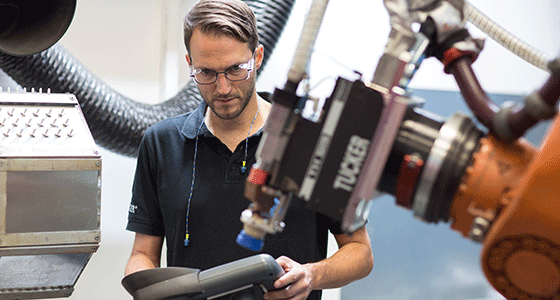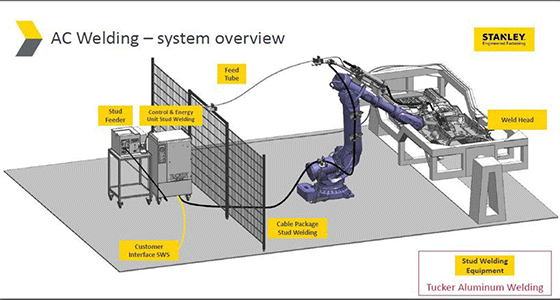How to Improve Stud Welding Efficiency with an Automated Production Line
Automated production lines are widely used in the Automotive and Industrial markets and provide several advantages for manufacturers. As companies around the world continue to realize the necessity of automation to remain competitive, robotic systems are becoming increasingly more advanced. So why should stud welding be left behind? By implementing an automated production line for stud welding in vehicle and light industrial manufacturing, you can boost efficiency and output without compromising quality.

Stud welding automated production line
The stud welding process, which has many applications in the manufacturing of steel products, is generally segmented into multiple production stages to manufacture a variety of steel components, which helps to streamline the process. This can help to improve the accuracy and quality of the welds, as well as reduce the amount of time it takes to complete the process, thereby improving efficiency in your manufacturing operations. Automated processes can also make factories safer by reducing the amount of human intervention required on production lines with heavy equipment and hazardous materials.
Automated stud welding processes are typically used in large-scale manufacturing projects where a material handling system can manipulate sheet metal components. This is typically done in two ways with stud welding equipment: The most common is to mount the welding equipment on a robot that moves the tool to the welding position on the part; The alternative practice involves fixing the welding equipment in place and moving the part to the welding position. Both methods require the automated weld head to be in close proximity to the welding position on the part, and motionless before initiating the welding process.
The weld process is exceptionally quick and is called “Split Second Fastening”, since the weld times are usually less than 100ms. After the weld process, the equipment will feed another stud to the weld head to prepare for the next weld, this can be done while the robot moves its position, or the material handling is moving the part, to optimize the cycle time.
Integrated stud welding systems
To enable quick and efficient stud welding, you need the right equipment. At STANLEY Engineered Fastening, we provide a broad range of tools, studs, accessories, and services to automate your stud welding process.
STANLEY Engineered Fastening's stud welding system from Tucker uses the no-hole fastening method. In this process, the stud is welded onto the car body, or customer part, using the drawn arc stud welding process. With no-hole fastening the customer’s part will not need to have holes drilled, which minimizes the risk for corrosion and leaking. Another benefit of the process is the welding equipment only requires single- side access to the part when welding.

The new generation of Tucker stud welding equipment allows for easy, robust, and energy-efficient no-hole fastening on a unified platform. These tools are equipped with linear motor technology to enable accurate positioning. Their high operational reliability and compact design give manufacturers a definite advantage in the production of large and small steel components. Our fixtured or robotic mounted assembly systems also assist in the high-speed production of a wide variety applications throughout the manufacturing process.
Leveraging a Unified Platform Architecture (UPA) for smarter factory solutions
The Unified Platform Architecture (UPA) provides standardized, connected hardware across all Tucker equipment, with the ability to monitor your entire network remotely from a single system. With remote monitoring, predictive maintenance, and even more power and capability, this integrated system advances your smart factory solutions in the era of Industry 4.0.
Fully connected systems result in:
- Plant/line/shift/operator productivity
- Reduced downtime
- Asset management
- Early detection of quality issues
- Consistent process deployment
- Asset management, tracking, and deployment
With STANLEY Engineered Fastening, automotive manufacturers get customized configurations that integrate next-generation smart tools and automation systems with new data collection software and analysis, resulting in production efficiency and cost savings.